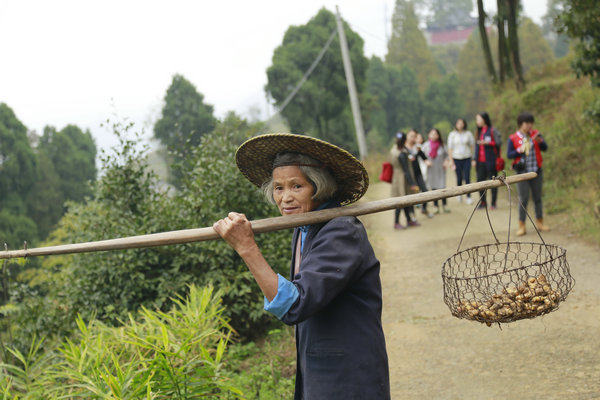Chinese Buddhism's birthplace remains a place of pilgrimage
 |
|
A villager in Shantouzheng village, Nanping township.[Photo provided to China Daily] |
Xu penned prose from the Guanpu Pavilion about the main cascade that crashes 30 meters down a cliff from a natural arch.
Tang Dynasty (AD 618-907) poets traversed the rivers along Xinchang city's Tianmu and Tiantai mountains and composed odes to their magnificence.
Given the symbiosis of geology and anthropology that define the bristling summits and surrounding expanse, the National Tourism Administration designated the Tiantai Mountains Scenic Area as a AAAAA attraction, China's highest rating, in October.
The county then invested 810 million yuan ($123 million) to build a 10,000-square-meter tourism center, and 32,000 sq m of accommodation and shopping, to be finished in February.
The county hopes to pitch to Japanese, Korean and Southeast Asian Buddhists, who want to worship at the source of the Tiantai tradition, says its tourism-development committee's director, Yu Changjie.
Nearby Nanping township's 12-km-long, 1,000-year-old Nanhuang Ancient Road was once the area's main logistics hub for salt, silk and tea. Today, it's a perfect place for excursions.
















